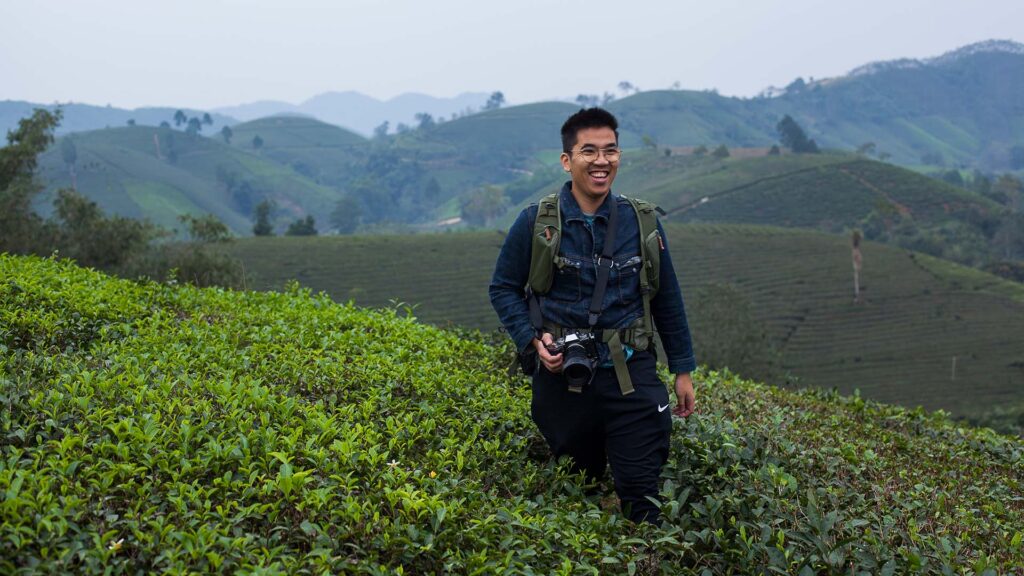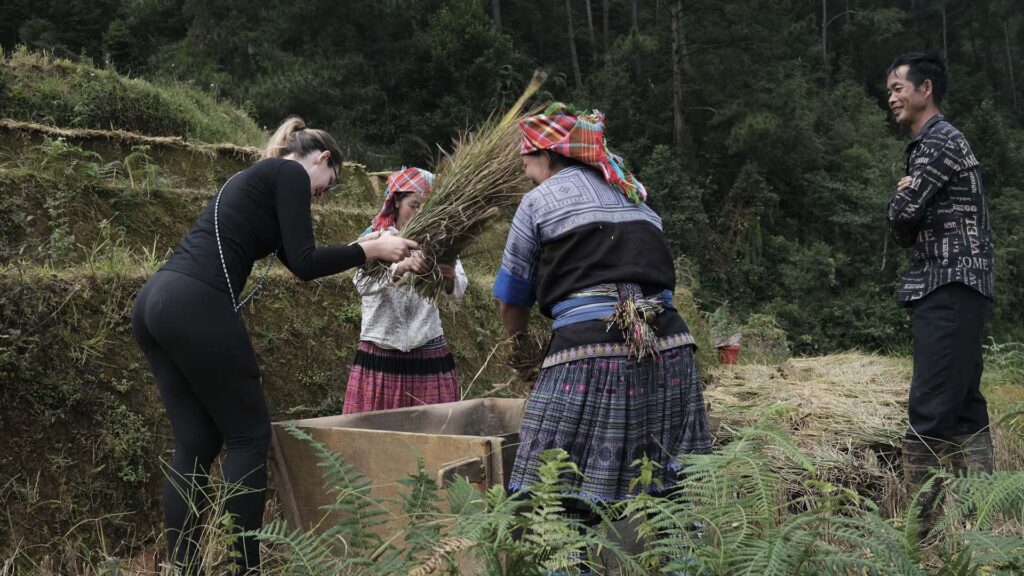Wherever you travel in Vietnam – from bustling urban centers to serene rural areas, from fish markets to rice paddies – you will encounter the conical hat. Utilizing natural materials including bamboo and leaves, the Vietnamese have ingeniously created a type of headwear that protects from both blazing sun and torrential rain. Highly multifunctional, it has also been known to serve as a fan, shopping basket and money-holder.
A folk verse goes:
“Muốn ăn cơm trắng cá trê Muốn đội nón lá thì về làng Chuông”
(Translation: To eat steamed rice and fish, To wear a good conical hat, go to Chuong Village…)
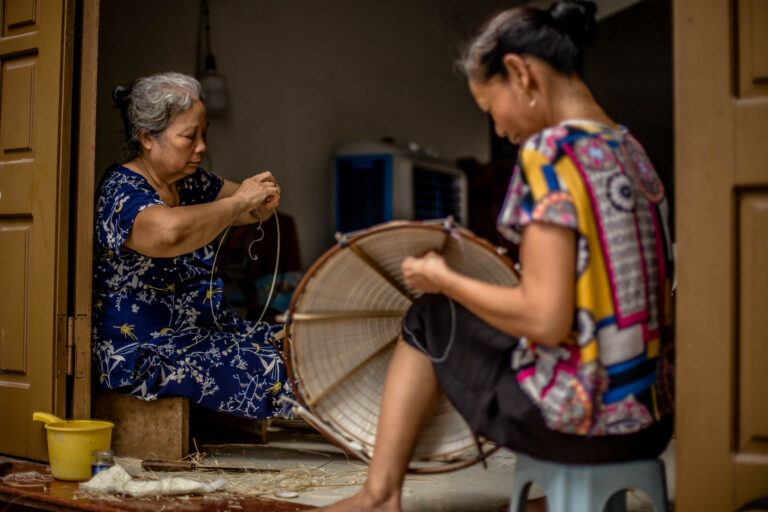
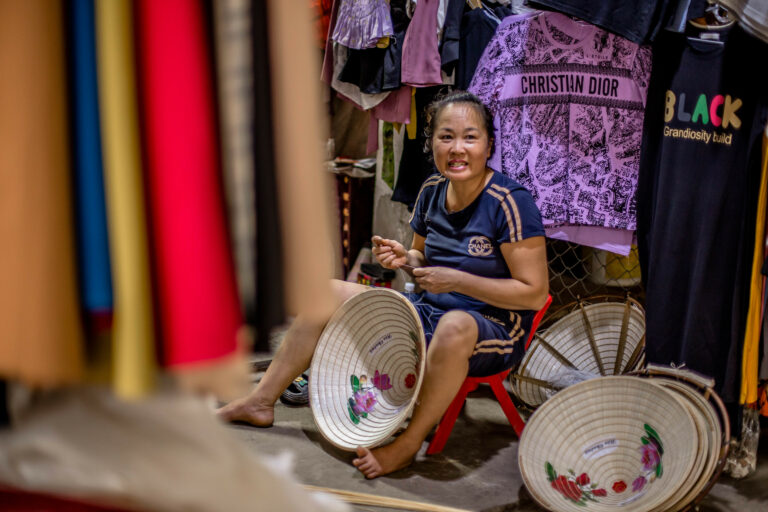
The art of making conical hats in Chuong (about 30km from Hanoi) has a history spanning centuries, and has been handed down from generation to generation. No one knows exactly when it began, but elders recall that since the 8th century, Chuong villagers have supplied various types of hats for different needs, from “ba tầm” for young girls to pointed hats for elegant men.
On a scorching summer day, I went to Chuong village to explore the process of making hats. The village exuded a serene atmosphere, and time seemed to stand still. Elderly villagers reminisced about significant changes in the village’s appearance, noting that “Chuong is now more prosperous than before”. However, the village’s ancient ambiance, characterized by the communal house, the ancient pagoda, and the traditional market, offered me a glimpse into a bygone era.
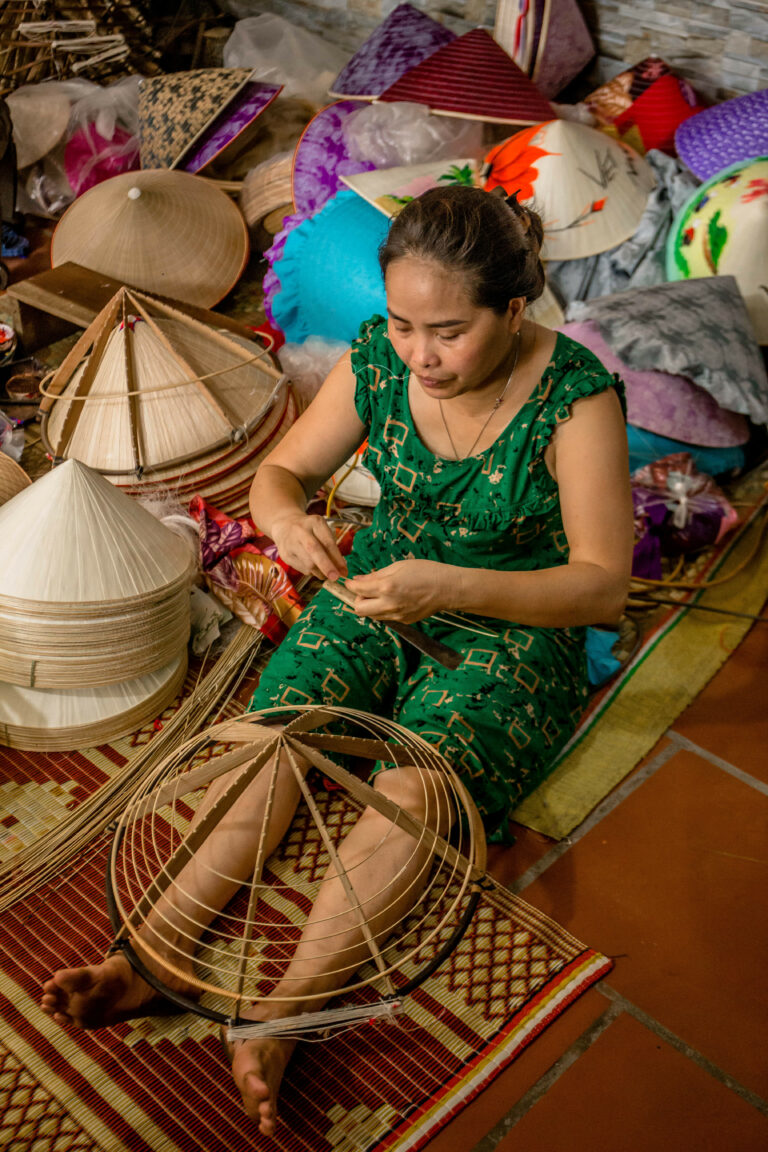
Nowadays in the village, there are few large-scale conical hat workshops. Instead, it is mostly women, grandmothers sitting on their doorsteps, skillfully crafting hats in their free time or while keeping shops in the market. Visiting the place where these hats are crafted, I saw firsthand how seemingly simple the hats look, yet the process involved is anything but straightforward.
I met Thao at her house, located opposite Chuong Pagoda. She has been crafting conical hats for 40 years. “Every villager in Chuong grows up with conical hats, and so did I. My family has been making hats for several generations. I started doing this when I was a kid,” she shared with me. Thao emphasized that crafting these hats is a meticulous process that demands great skill and patience.
She explained that a conical hat consists of two primary parts: the leaves and the frame. The first stage involves leaf preparation. The leaves used for the hats are from a type of palm tree called ‘lá lụi,’ sourced from forests in Quang Binh and Thanh Hoa. Selecting the right leaves is crucial to ensure the final product’s quality. The chosen leaves must be large, even, and vibrant green, and they undergo several treatments including bundling, softening, twisting, and three rounds of sun-drying. While wandering along the Day River dyke road, I encountered numerous yards where leaves were drying, and locals were busy collecting them due to the forecasted rain.
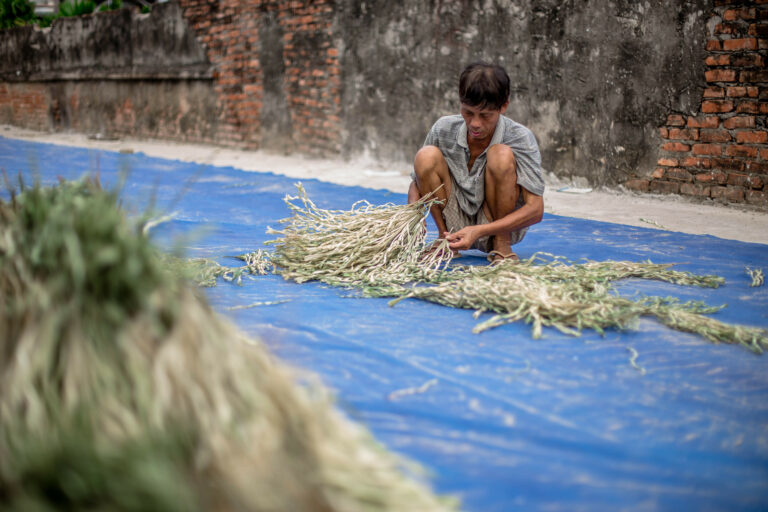
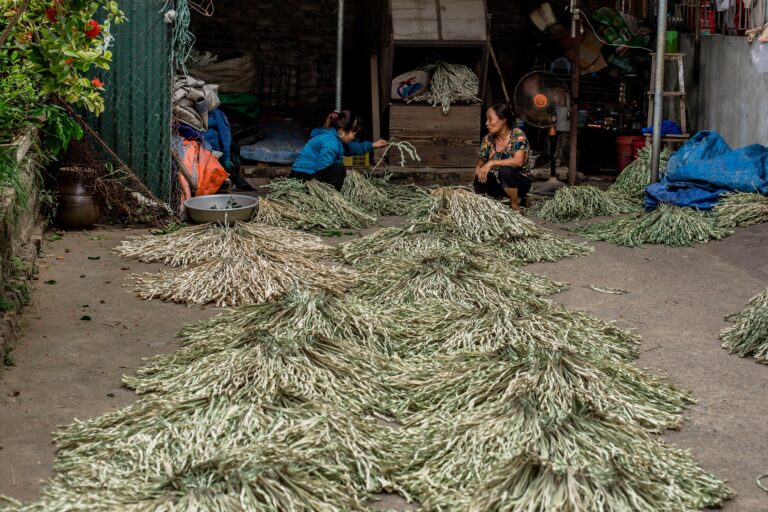
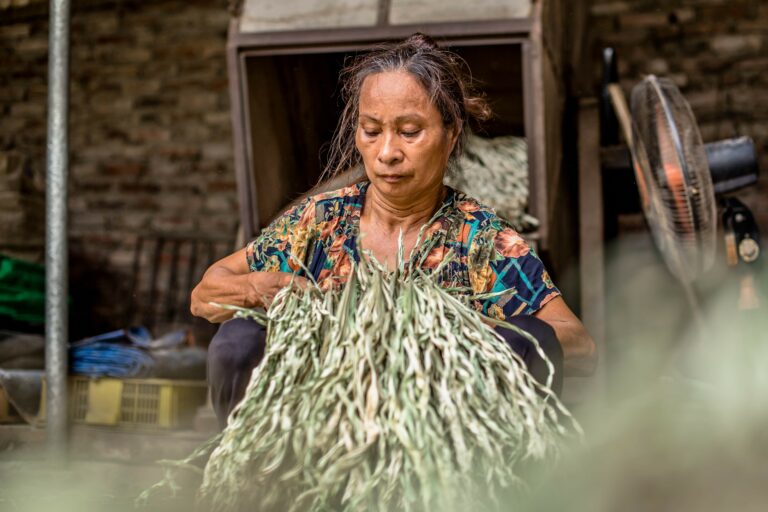
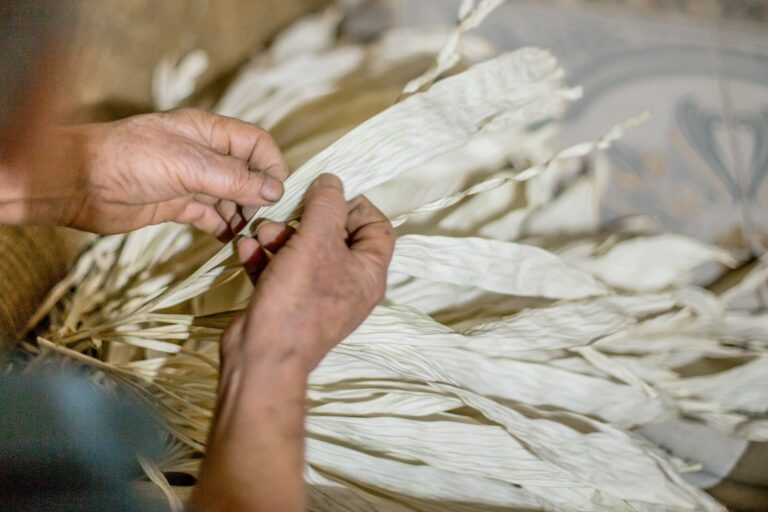
Once transformed to an ivory-white shade, the leaves are meticulously trimmed straight and flattened with heat and a damp cloth. This leaf-preparing step, which heavily depends on weather conditions, is considered the most difficult in the entire process.
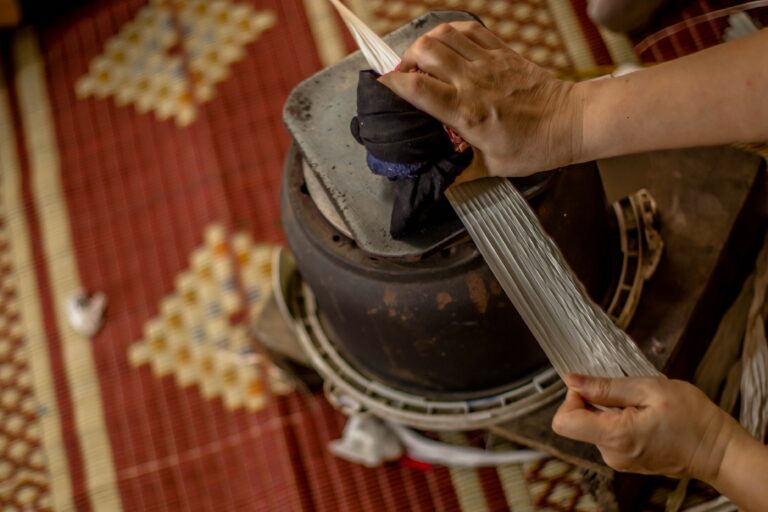
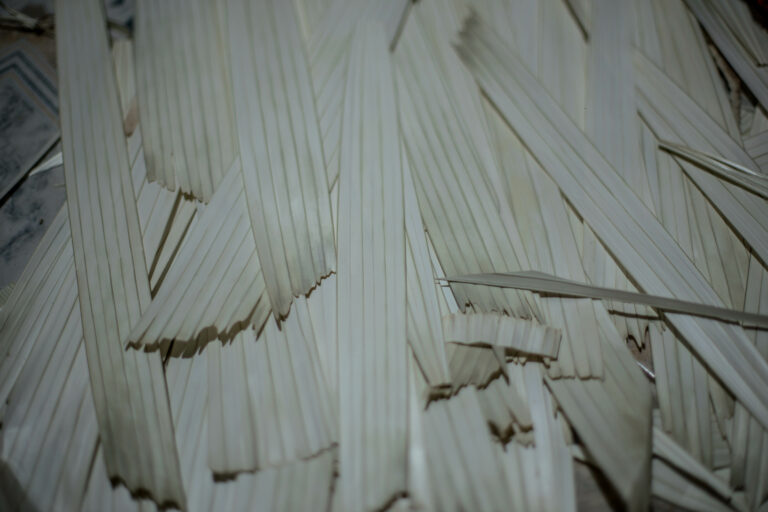
The hat frame is made from eight wooden ribs, assembled into a conical shape forming the structural backbone to accommodate 16 bamboo rings. These rings, of varying sizes, are securely tied with rattan and then tightly fastened to the frame.
Once the frame is completed, layer by layer, the split leaves are fixed onto the frame using a needle and thread. Each layer of leaves is carefully stacked to ensure the hat boasts uniformity in color and structure. Finally, the leaf layers are sewn into the bamboo rings using white threads.
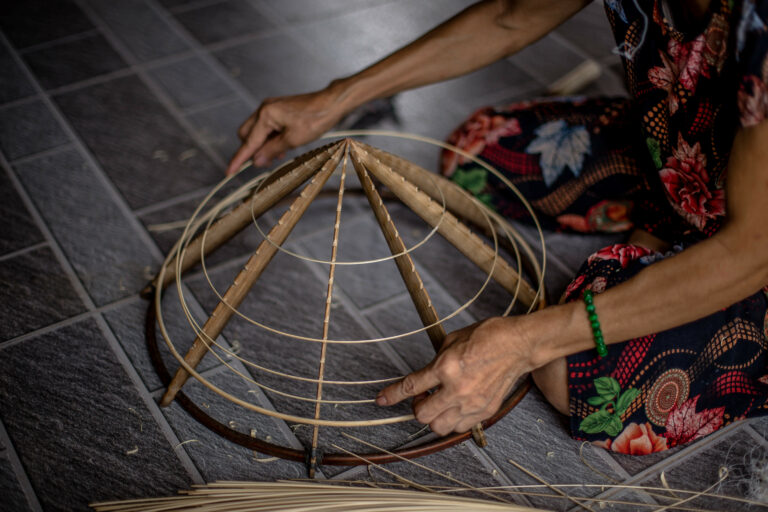
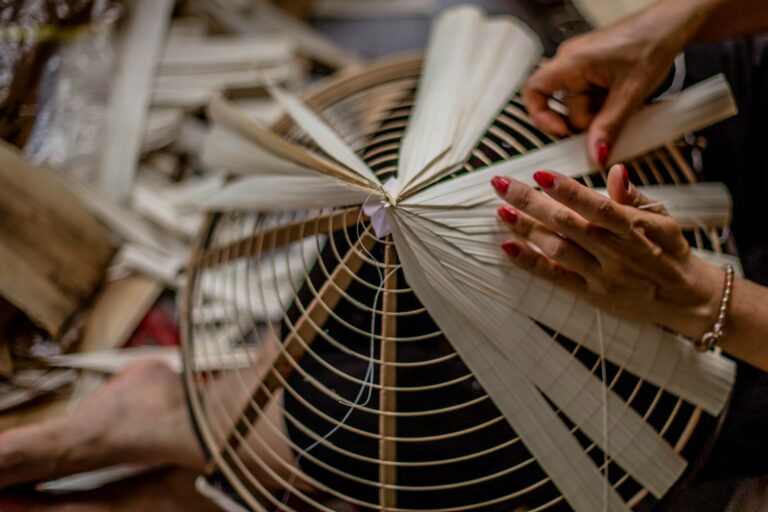
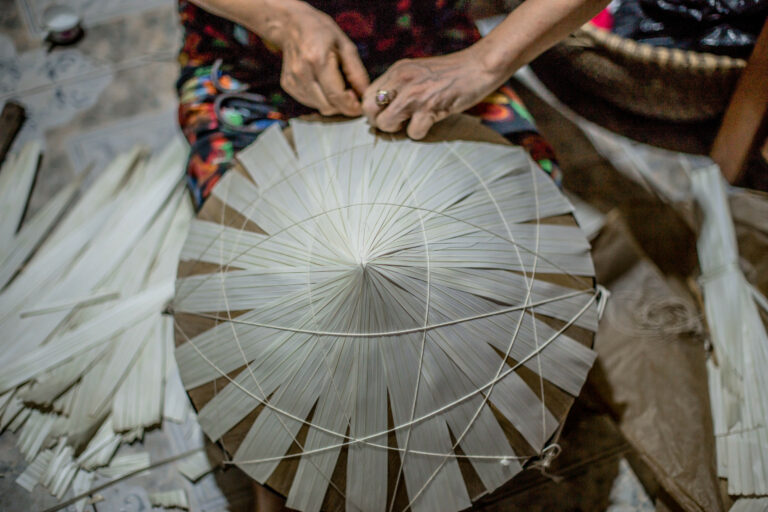
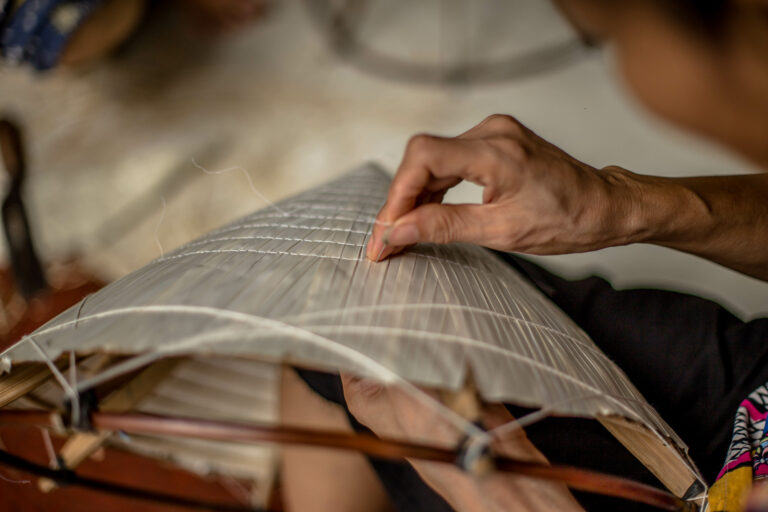
While traditional leaf hats remain the main item of production, Chuong villagers have also embraced contemporary changes, crafting hats from colorful fabrics and adorning them with intricate patterns. Each hat embodies the skill, patience, and dedication of local artisans. Therefore, a visit to Chuong village is more than observing the hat-making process, it is a cultural immersion.
Photos and texts by our Vietnam in Focus Correspondent and Guide Phuong Le



